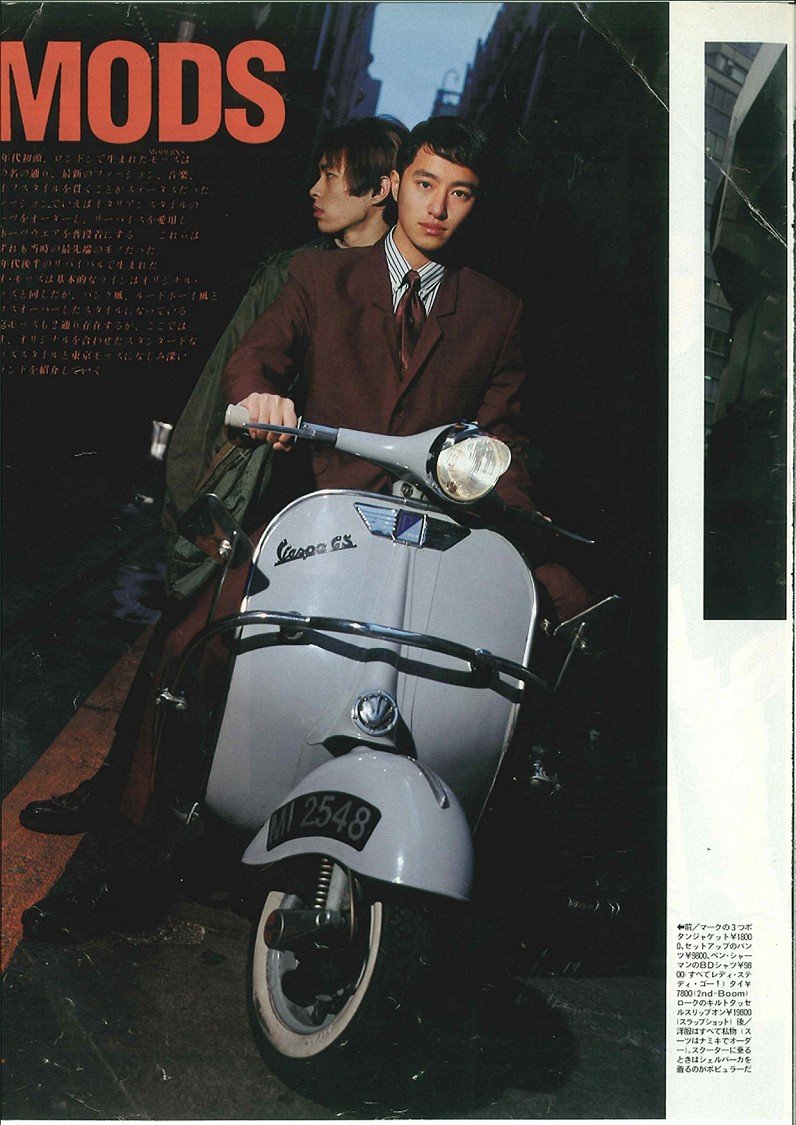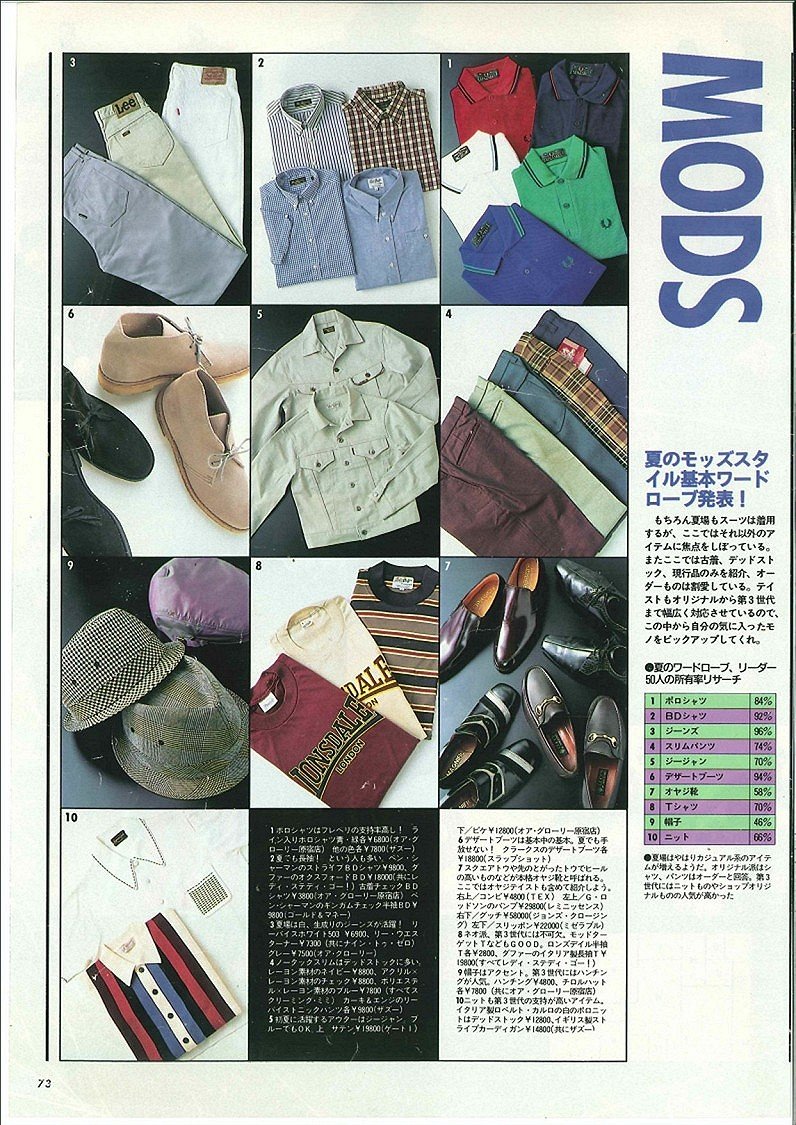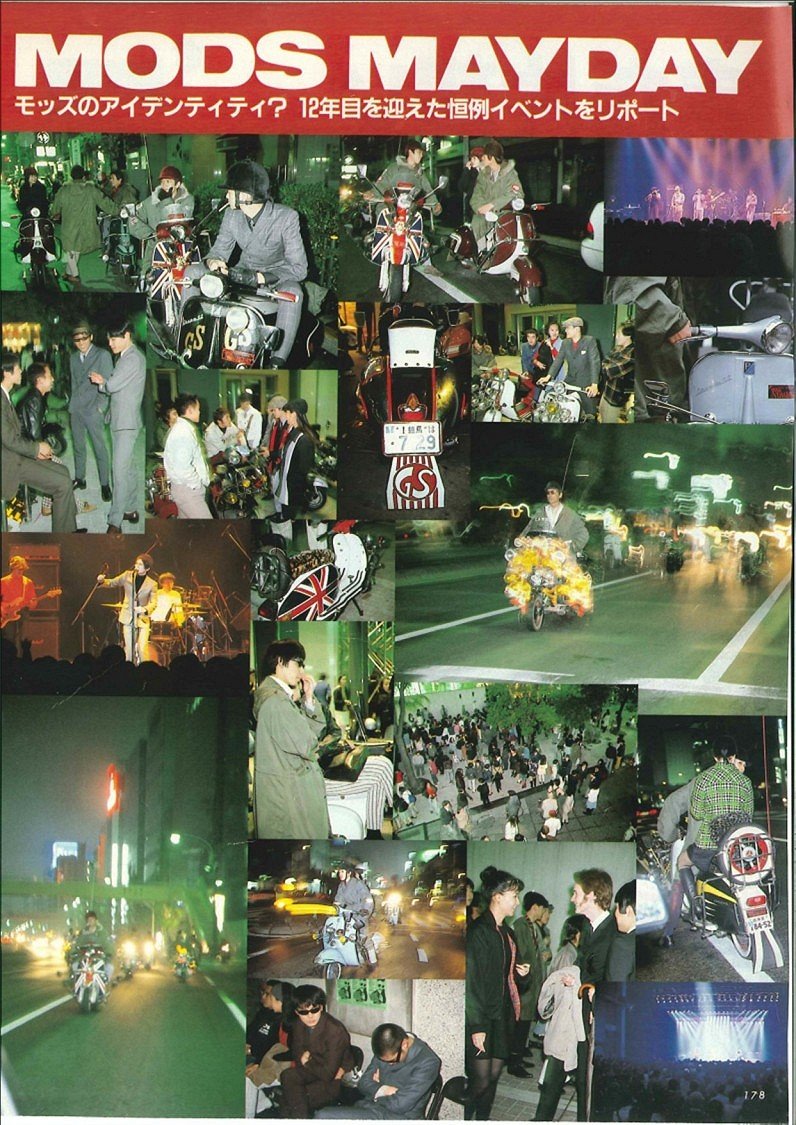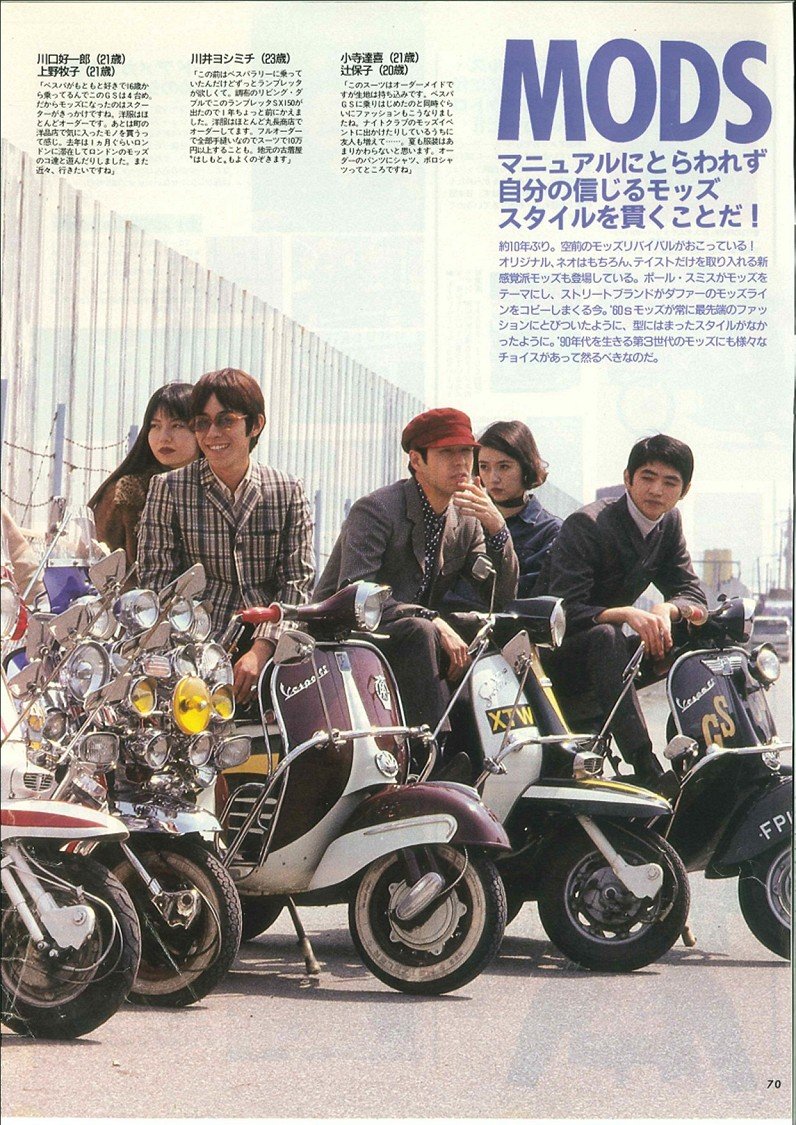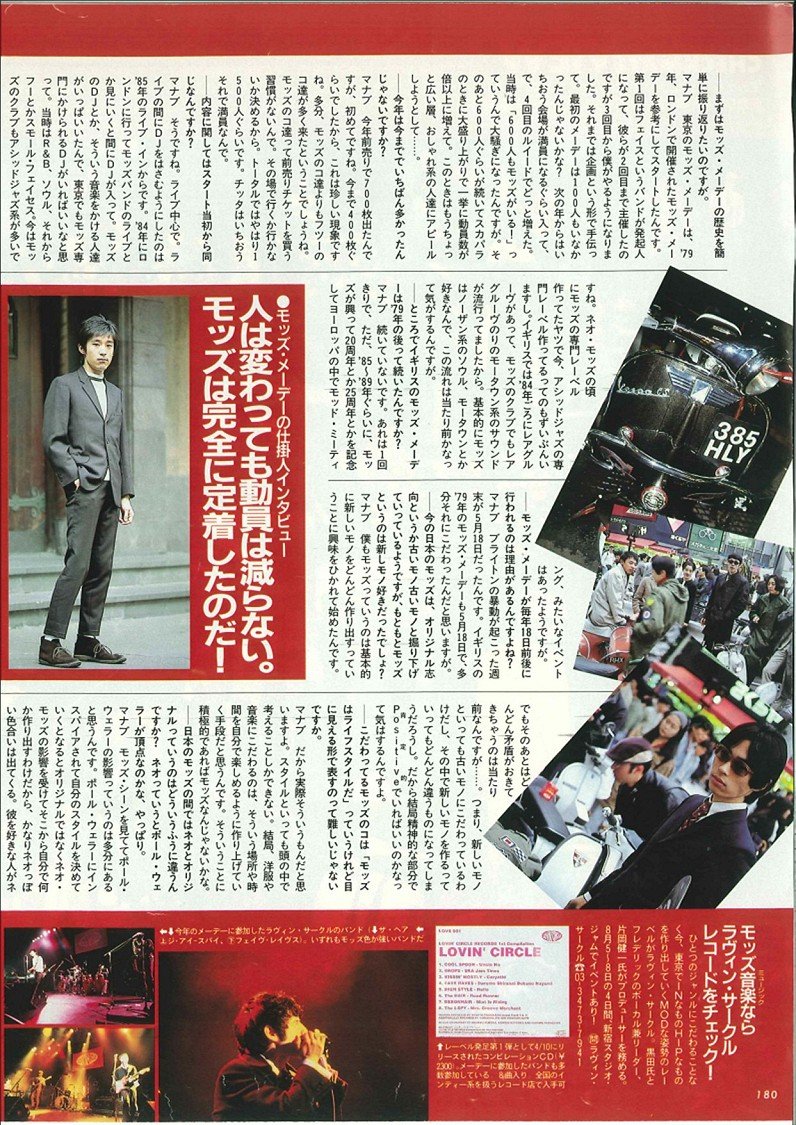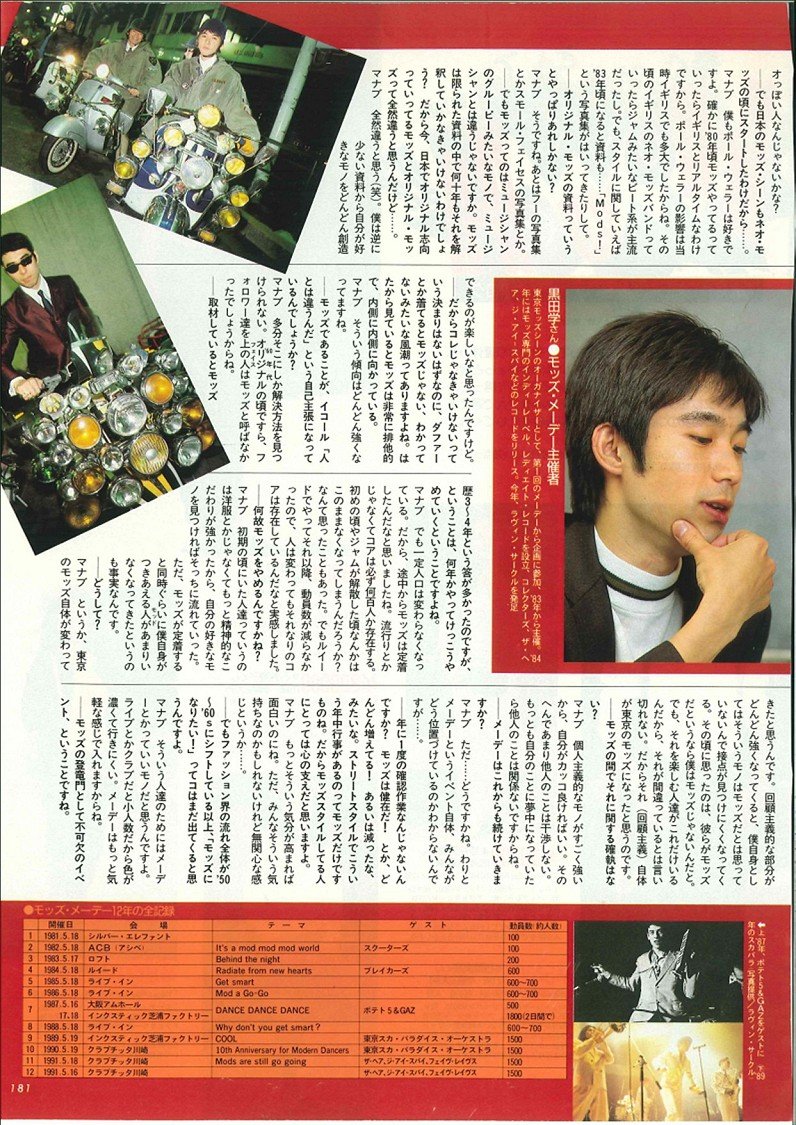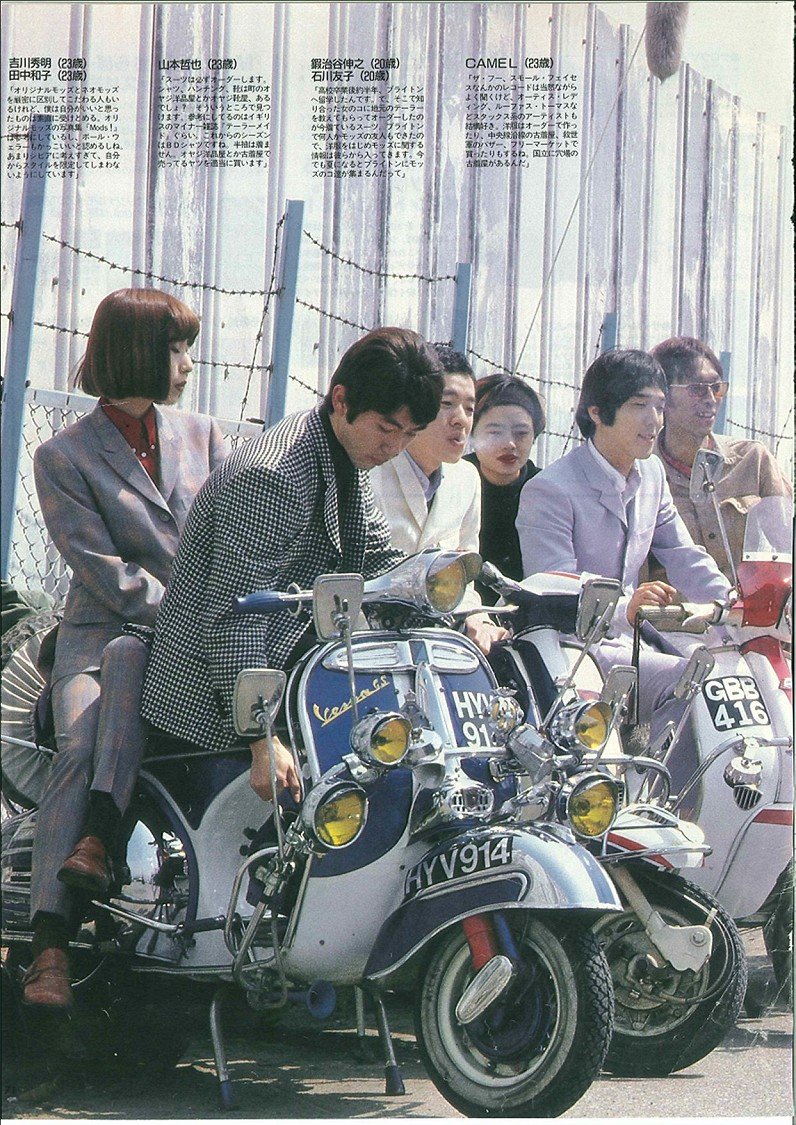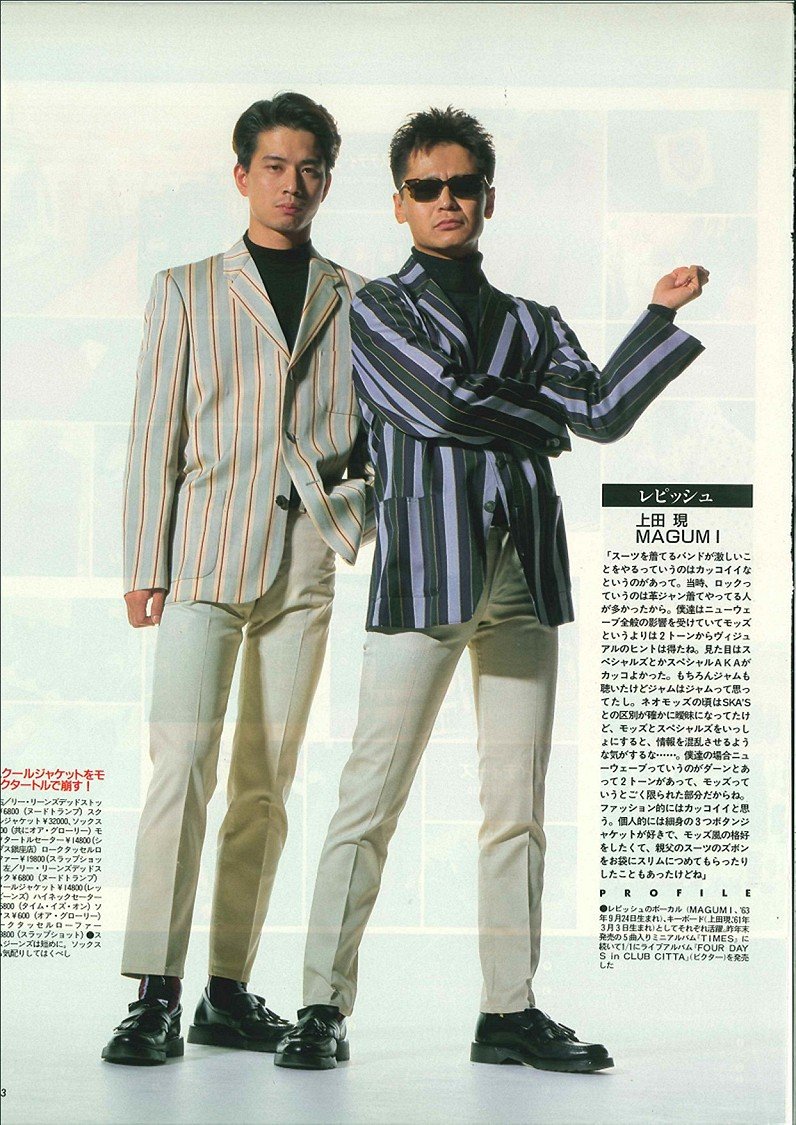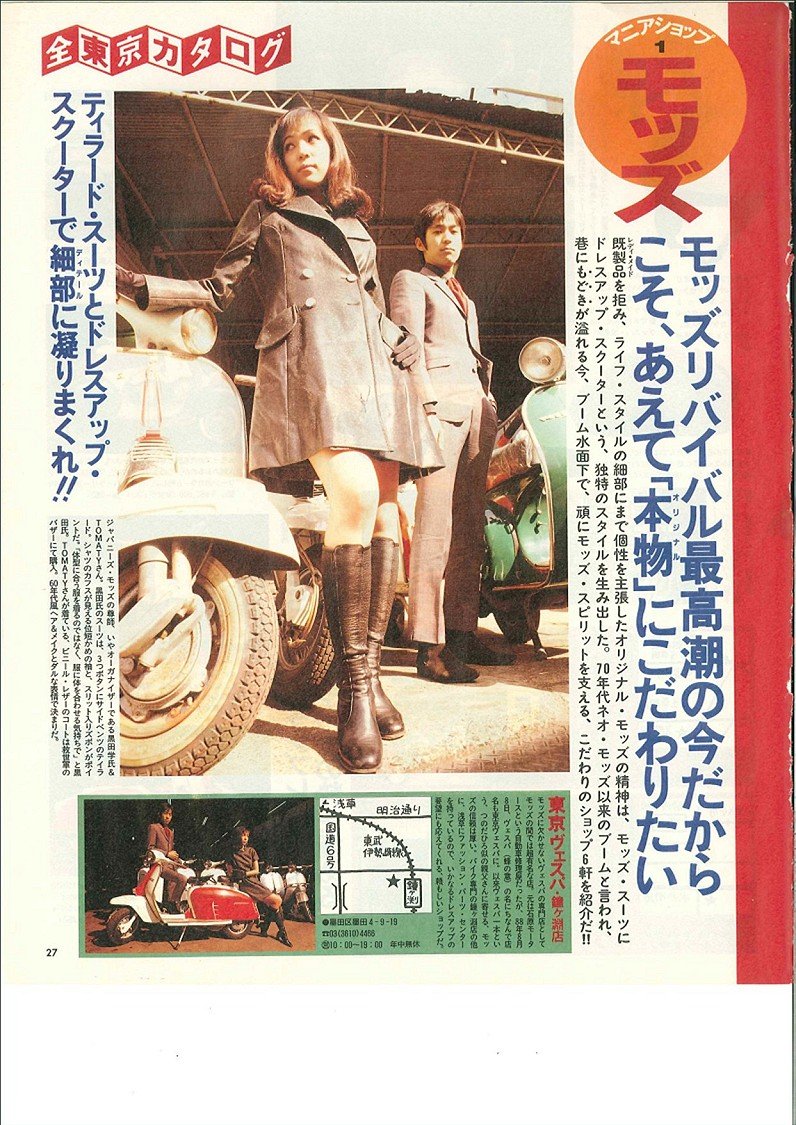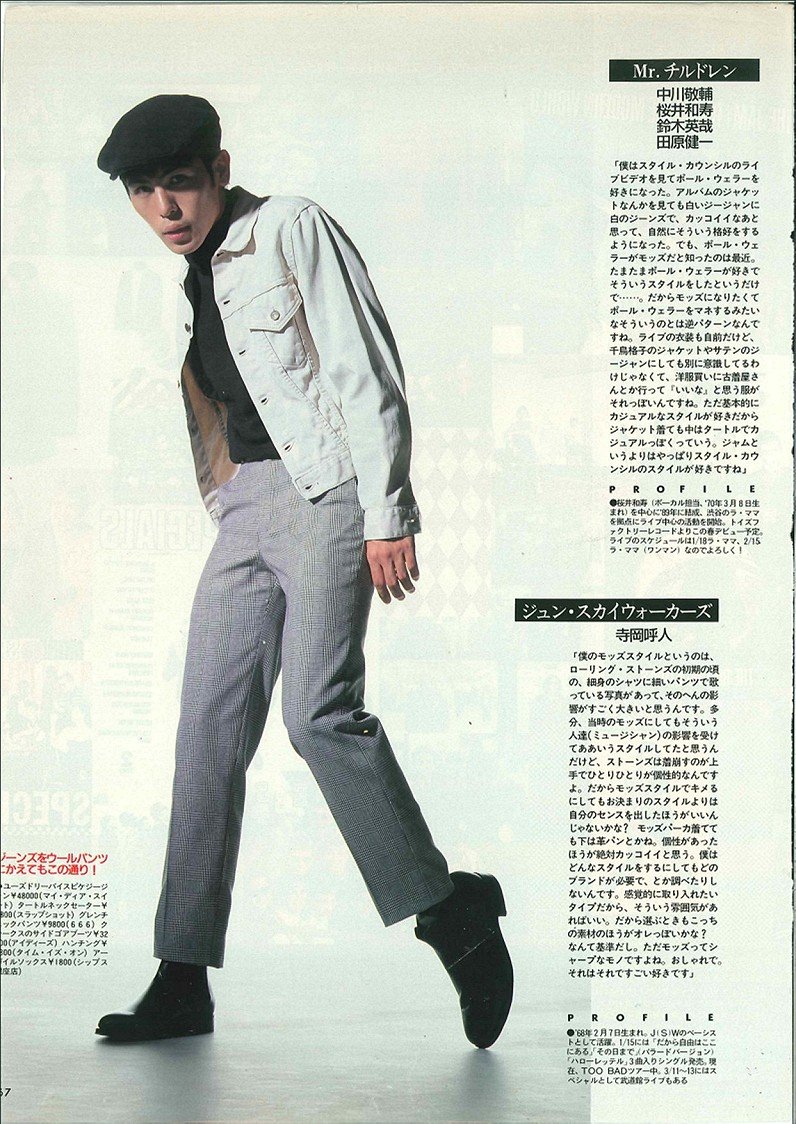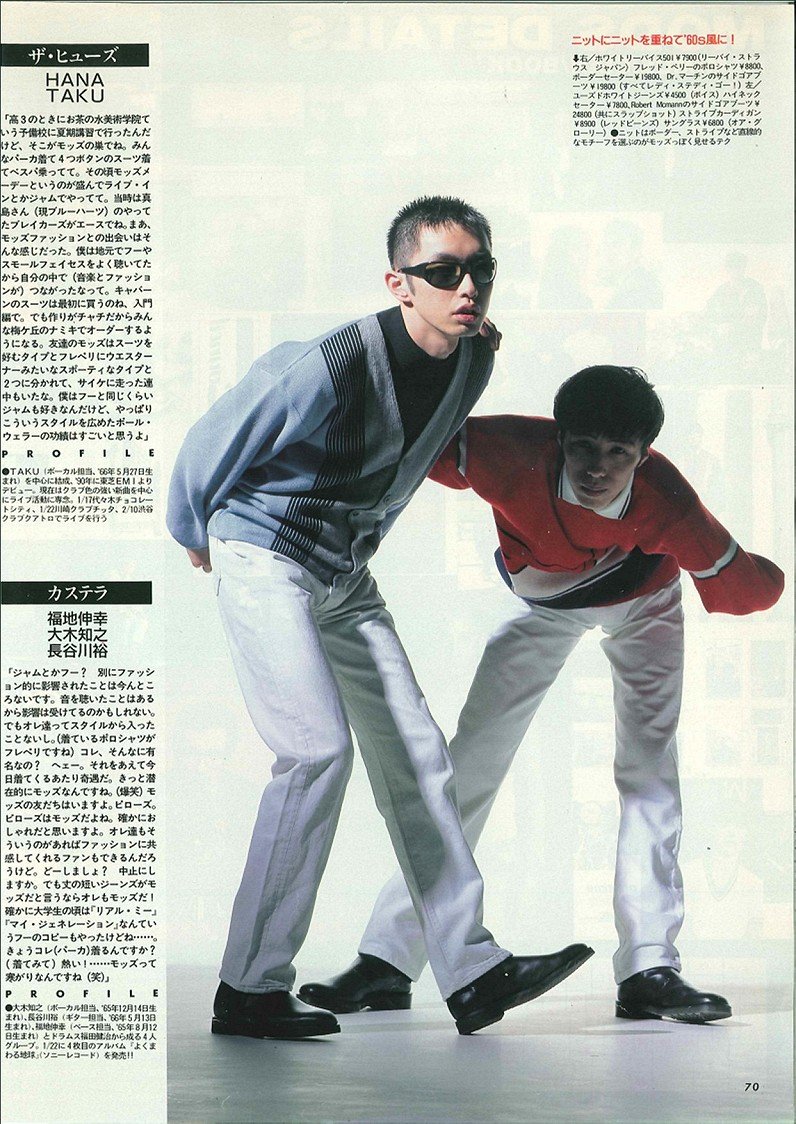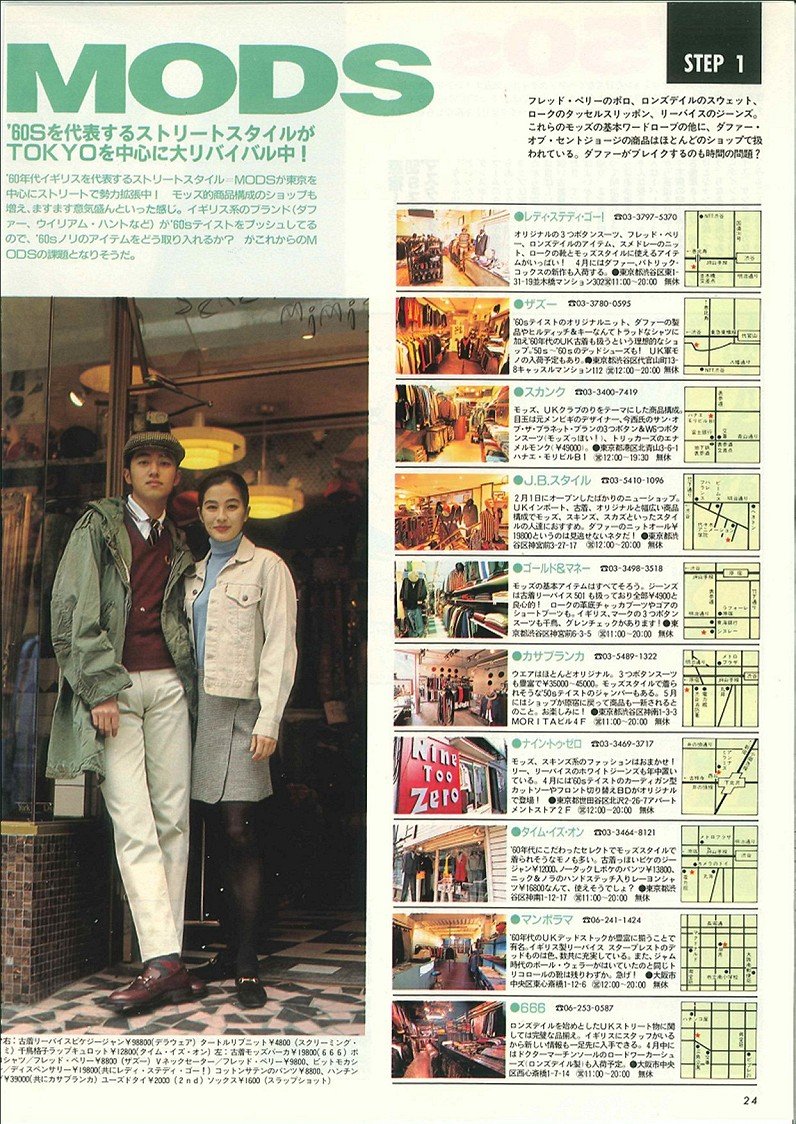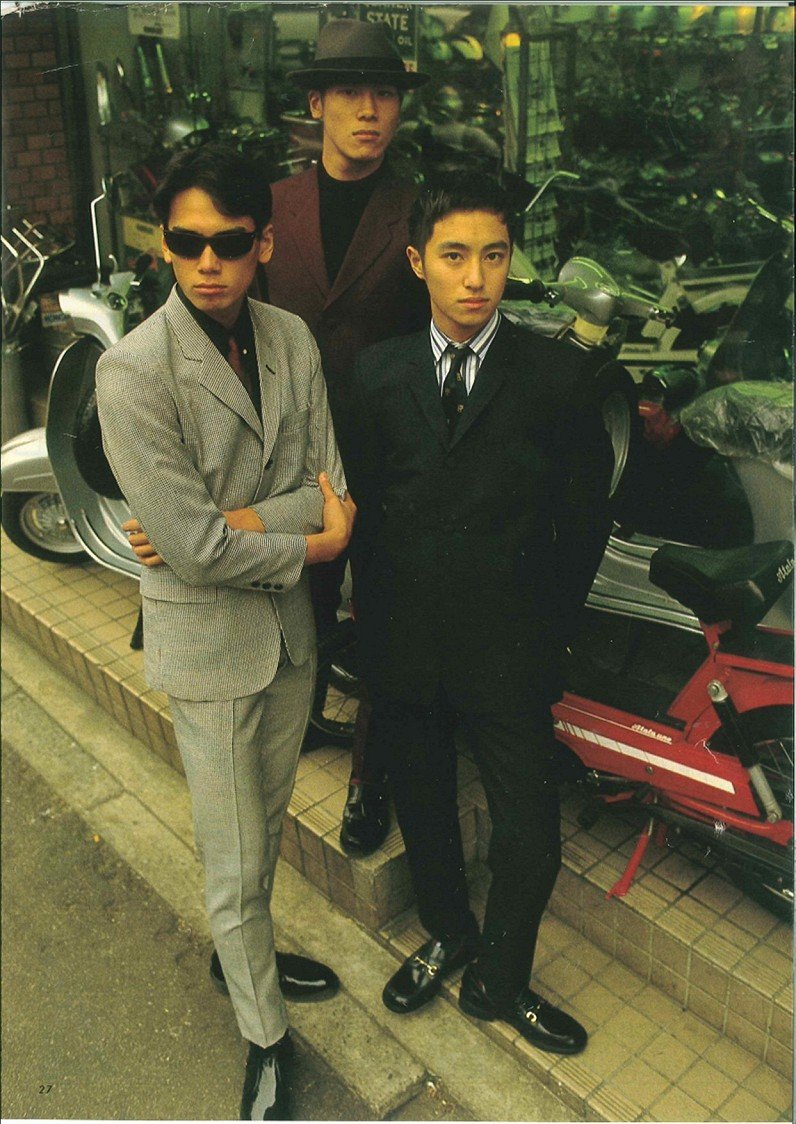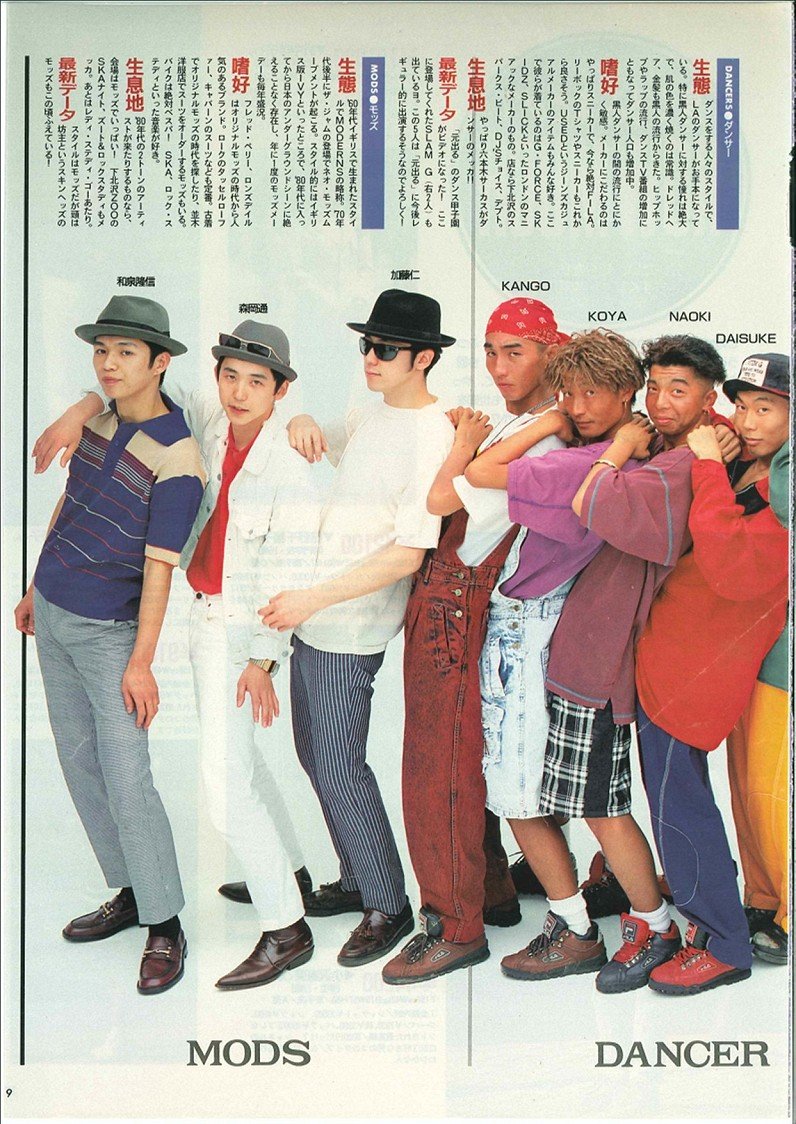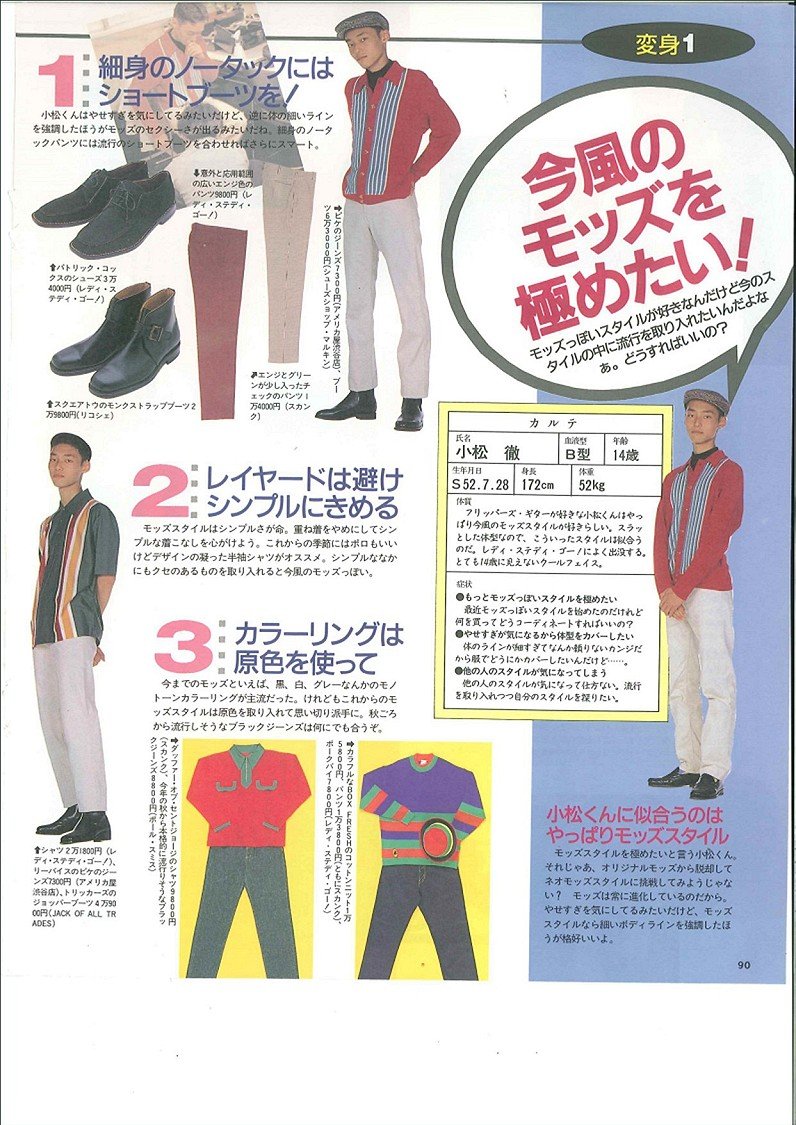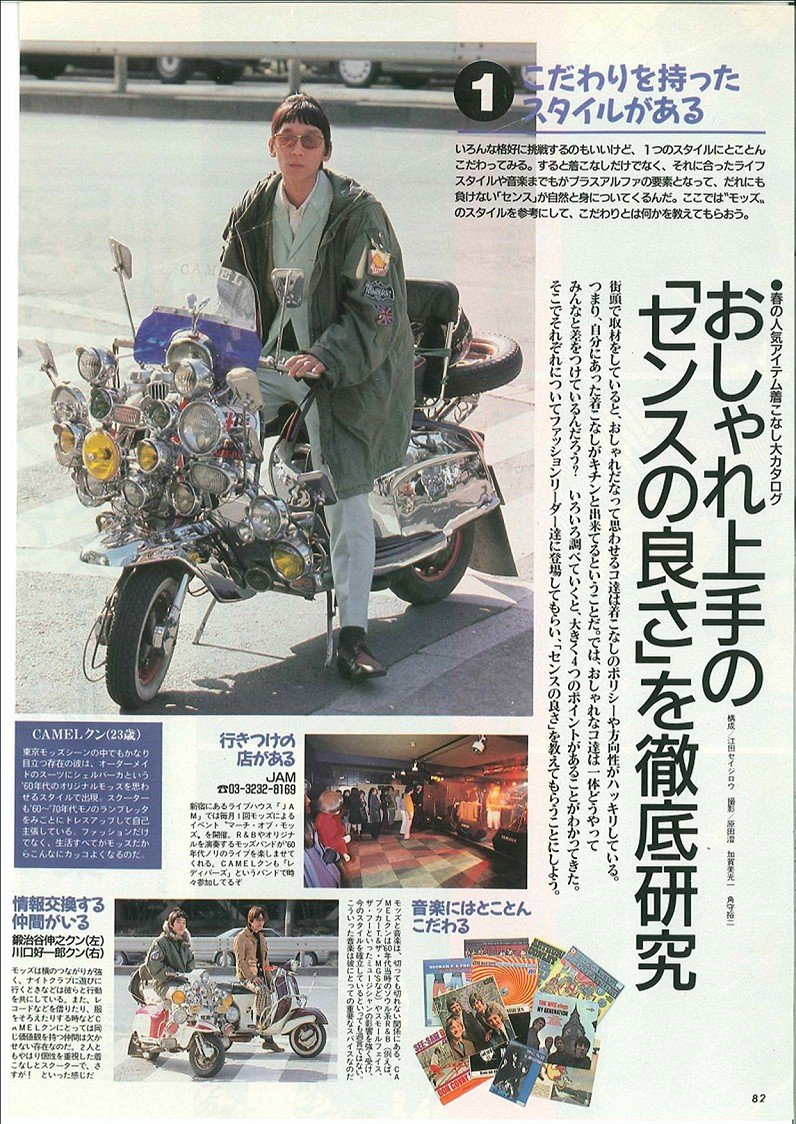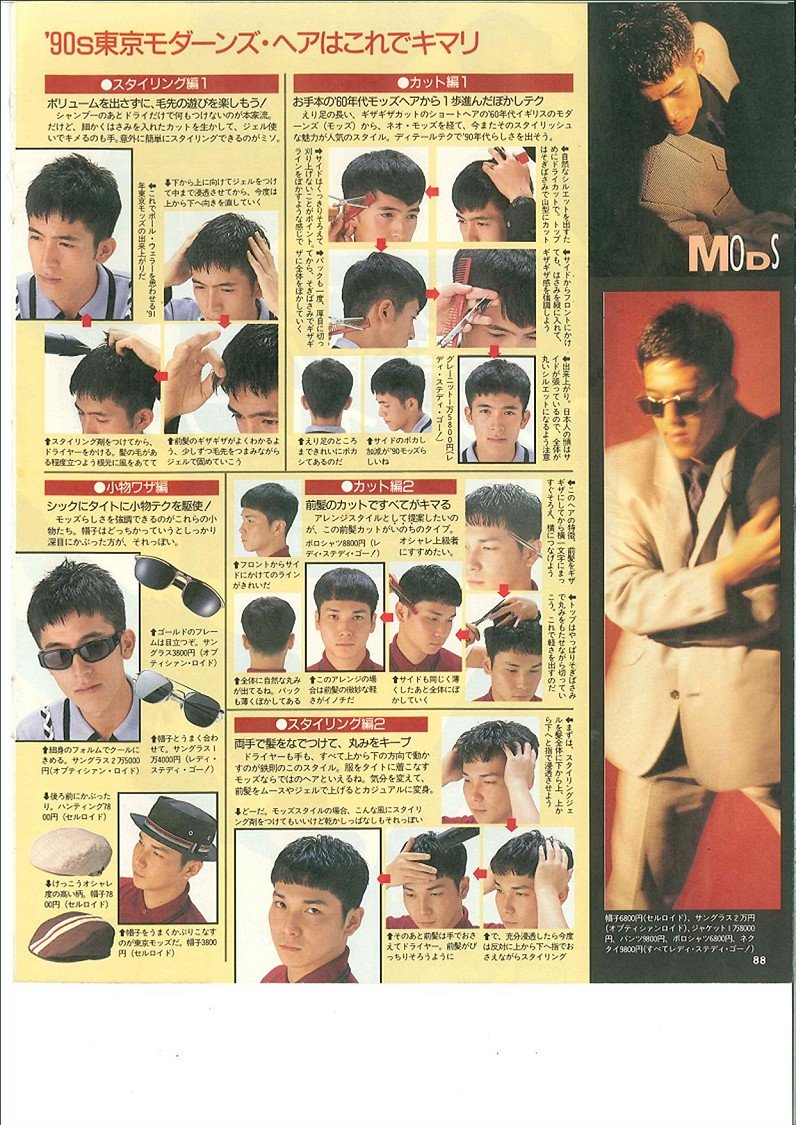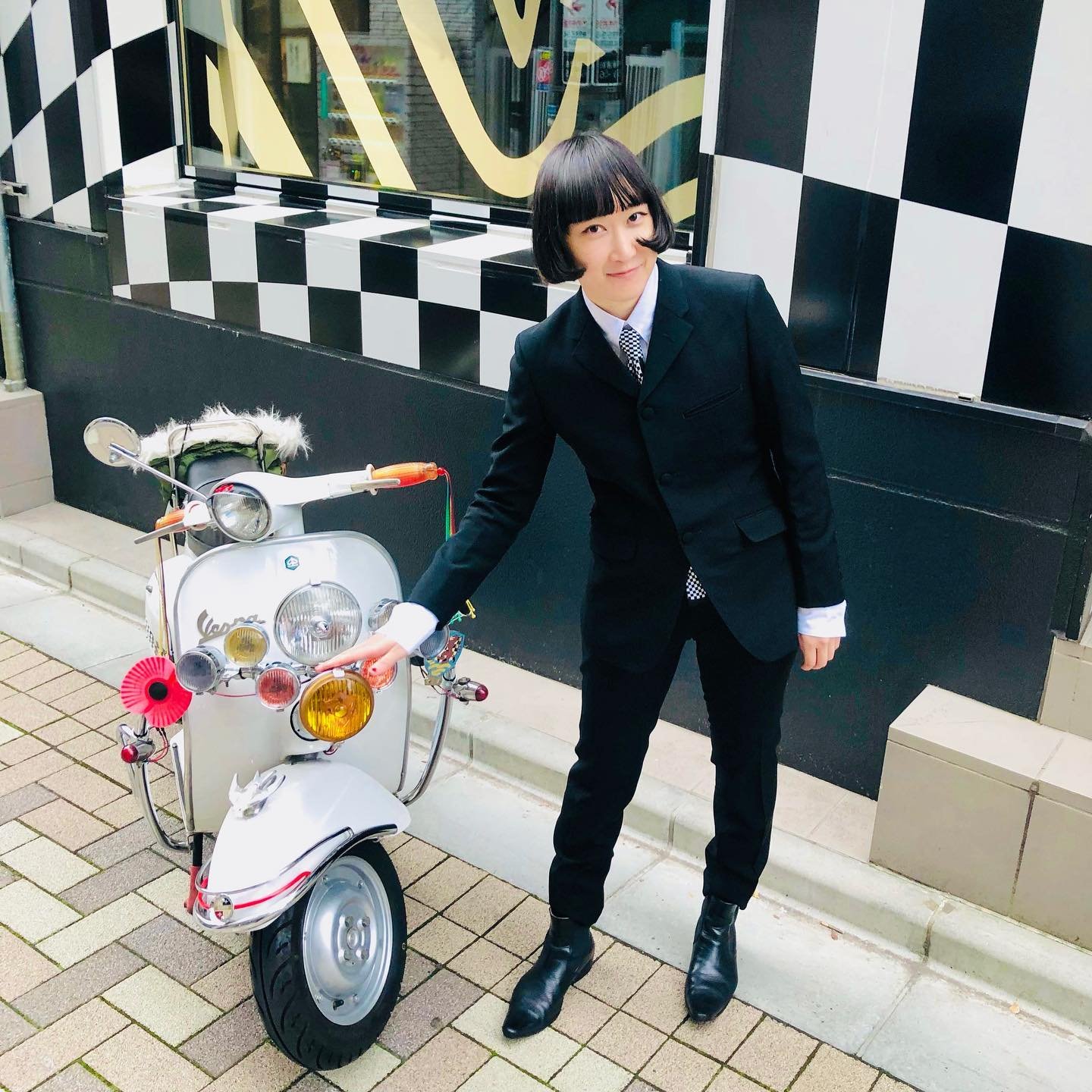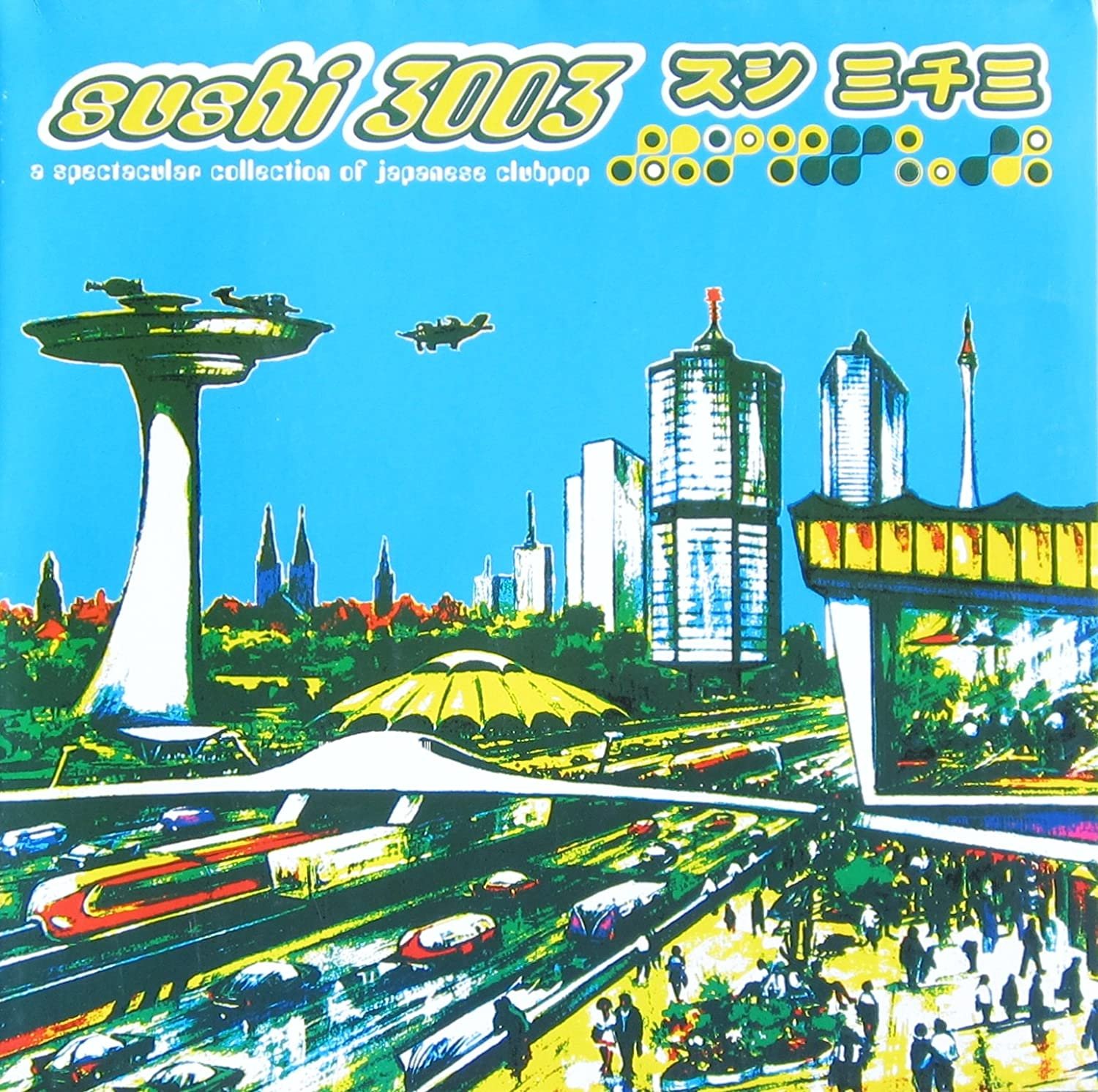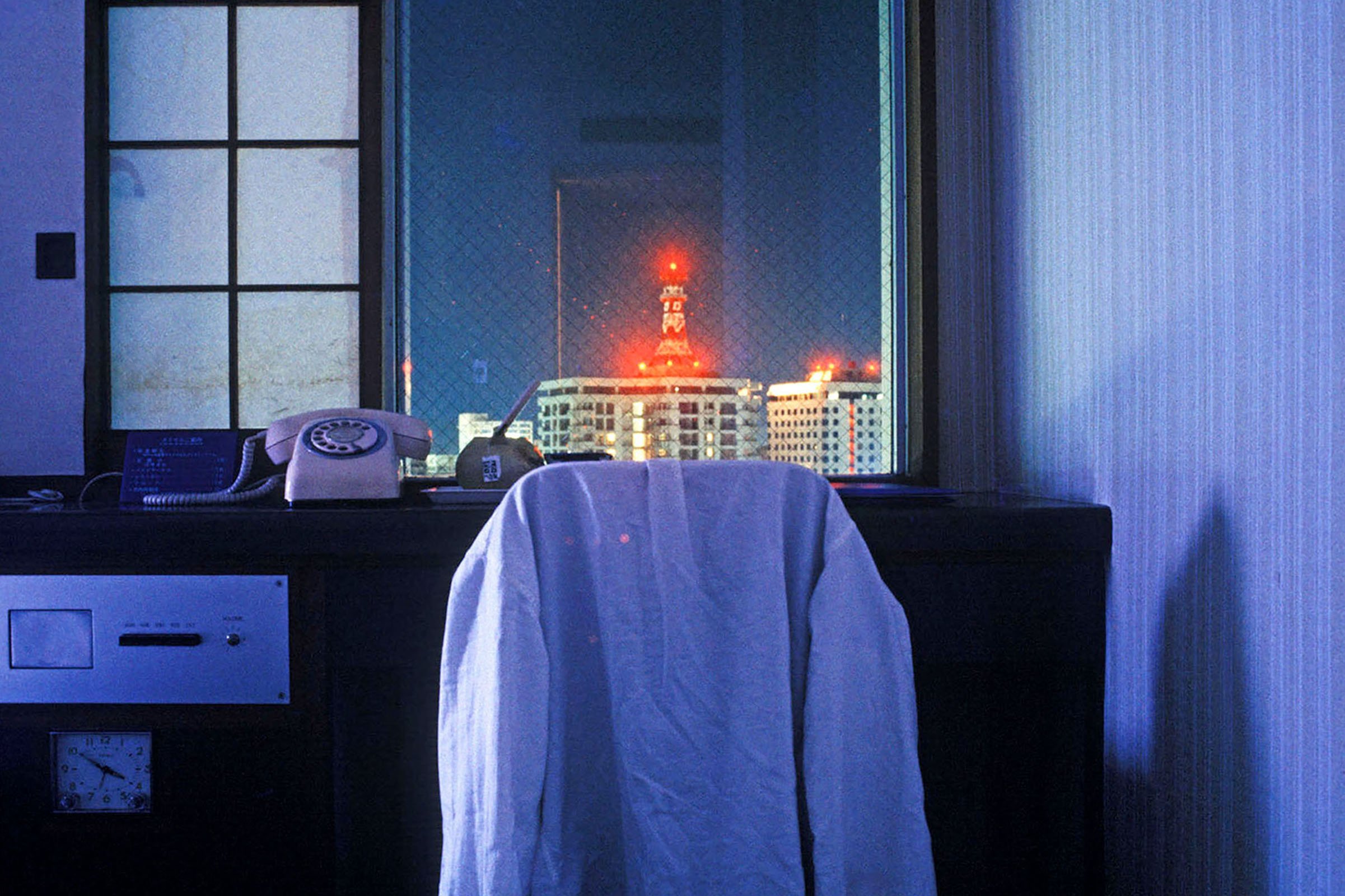Tokyo Mods: How an English Youth movement from the 60s conquered Japan

It is 1978, and punk is taking over the UK's mainstream. Meanwhile, a handful of young people are trying to awaken the youth culture that had dominated the nation more than a decade earlier. The mods were waiting for their revival.
While this clash of identities was brewing on the European island, 5,938 miles away in Tokyo, the mods were surprisingly also waiting to explode.
How did mod culture, a teenage movement from the mid-1960s and distinctly English, manage to establish itself in Japan and survive for over 40 years?
Tokyo mods portrayed for Check Mate Magazine, late 90s
A Couple of Tokyo Mods, Late 90s
How Mod Culture became International: Pete Meaden
Pete Meaden was only 23 years old when he began to manage one of the bands that would evolve to be the emblem of a blooming culture, The Who. This was during the year 1964, in the busy town of London, England. Having spent his teenage years in the city, he knew about the movement that was taking the capital by storm: the mods, who are young men dressed in British Army M51 and M65 parkas, desert boots, three-button suits, and skinny Levi’s, riding Vespa and Lambretta scooters with a ton of mirrors and lights on them, constantly fighting on the streets.
Being a mod was about being a modernist [hence the name], in other words, someone constantly looking for the next big thing, whether it was in fashion, design, music, or any element of pop culture. A true mod doesn’t want to recreate the past, since they always push forward, and, of all of the mods in London, Pete Meaden was recognized as the face of the movement and titled the "Mod King" of the time
Gallery above: Materials from 90's magazines [Hot Dog Press, POPEYE, Check Mate, Fine, Boy Boon, or Treasure Island]
Meaden knew that the movement needed a focal point, so he decided that The Who would be the emissaries of the adolescent revolution, molding them in his image and ideologies and writing their first single “Zoot Suit/I'm the Face” for them. Soon after, The Who would become the mod band par excellence but Peter Meaden would die tragically in 1978, at the age of 36.
Before that, in 1973, The Who released Quadrophenia, a thematic album about the life of a mod in 1964. Peter Meaden, before his death, would claim that the protagonist of the songs was no one but himself. The album and its story inspired a film of the same name released in 1979.
It was then, and thanks to it, that young Tokyo enthusiasts began to pay attention.
Rise of the Tokyo mods: Manabu Kuroda
Quadrophenia [in Japan titled Farewell, To The Light Of Youth] was Tokyo’s first glimpse at mod culture. Although not an overwhelming success, the movie did attract the characters that would become key to the growth of the movement in the country. Among them was a young man named Manabu Kuroda [AKA Manabu K. Dove], who would become to the Japanese mods what Peter Meaden was to the original mods in the UK.
Kuroda could already be considered a mod in 1979, but before the release of Quadrophenia, he was "modding" alone in Higashikurume, Tokyo. It was the film that connected him with other mod subculture enthusiasts, taking as a meeting point the independent movie theater where the film was shown.
Tokyo Mods, Early 80s
In the beginning, the meetings did not exceed 10 or 15 people, but things began to change when fan clubs of The Who, and especially The Jam, got involved in the gatherings.
In 1980, The Jam's fan club in Japan inspired by the MODS MAYDAY, an event held the year before in London, organized their own MAYDAY to celebrate The Jam's second visit to the country. Their MODS MAYDAY became an annual event, celebrated annually every May, and the first one, held in 1981 in a small club in Kichijoji, was considered the birth of the Japanese mod scene. Around 200 people attended, far from the small group that would meet at the aforementioned theater.
However, it wasn't until Manabu Kuroda took the reins of MAYDAY in 1983, at the age of 20, that the mods became an actual subculture.
Kuroda knew that despite being a movement imported from the UK, Japanese mods had an identity of their own. Even when the culture didn't exist in the country until just a few years ago, they didn't want to imitate it because they wanted to create something genuine.
Tokyo Mods, circa Mid 80s
He decided to kick off a modzine [mod fanzines] movement like the London scene did back in the 60s, in parallel to how their British counterparts were doing at the time. The first of its kind, curated by Minako Watanabe and the staff of MAYDAY was “Here, Today”, published in 1983. The publication was decided to be quarterly, and when that became unsustainable, it was decided to publish at least once a year on MAYDAY, by working with a small printing house in the city.
Then, when the Macintosh appeared in 1984 along with the birth of digital art, more design professionals entered the market. The modzines became obsolete because they couldn’t keep up with the quality of the product of big publishers. Kuroda remembers, “I began to think to myself, ‘I can't keep up with them anymore.’ I was no longer satisfied with hand-printed and stapled publications”.
Tokyo Mods gang, Early 80s
Vespa and Lambretta Scooters still remain icons of the movement
So, he jumped from the publishing world to the music business, where he developed the sound of mod music 100% made in Japan. Under the label, Radiate Records, he released the compilation Dance! Approved Streets [1987], which brought together the scene's top acts: Page Three, Mersey Beat, The Hair, High Style, and above all, The Collectors.
Likewise, it was under Kuroda's command that MAYDAY gave way to its most important event: the Scooter Run, a tradition that began in 1984 and prevails to this day with the help of the scooter club THE NUMBERS! Tokyo, which was established in 1982.
The Tokyo mods did not share the same working-class origins or social tensions that drove the original movement in the UK. Since these tensions didn't exist back in 1980s Tokyo, it could be said that style and music were what drove them. This was especially noticeable in how they expanded into the city's club scene.
Tokyo mods for POPEYE magazine, early 90s
During the 1980s Japanese music club explosion, the Tokyo mods solidified their position on the Japanese subculture map, thanks to their efforts to become part of the growing DJ scene in the city.
In 1986, The Collectors formed and appropriated the legendary club, Shinjuku JAM as their base. Shinjuku JAM, which had opened its doors in 1980, became a hub for the mod community and The Collectors became its main act.
Legendary Live-house, Shinjuku Jam, which closed it’s doors in 2017
Musically closer to the mod revival that Paul Weller and The Jam popularized in London, it was The Collectors who launched the mod aesthetic to the mainstream and managed to maintain it up to the present day. The Collectors were to Tokyo what The Who were to London.
Meanwhile, on the DJ circuit, the iconic Manabu Kuroda led the scene with his Gang Stage parties at Tsubaki House, the mecca of many musical movements of that time, located in Shinjuku. At some point, Gang Stage and Noriaki Onuki's London Nite parties shared the same venue. In contrast to their Londonian counterparts, Tokyo mods were open to other musical movements and scenes, such as the Rockabilly and the Punk that constantly reunited at London Nite parties.
"Camel," a prominent Tokyo mod personality in the 90s. Courtesy of @the_numbers_tokyo.
Tokyo Mods for Popeye Magazine, Early 90s
When Tsubaki House suddenly closed its doors in 1987, the mod DJ circuit had to find another musical epicenter. So, they found it in the club Whiskey A Go Go and FACE, which opened in 1988, and where visitors dressed in mod clothing were only allowed to enter. Other clubs such as P Picasso, Milo's Garage, and Sound and Place enlarged the scene outside Shinjuku.
This strengthening of clubs in the city allowed the mod scene to establish itself beyond the casual encounters that had marked the beginning of the movement. It was also helped by the growth of the scene's own music labels. Lovin' Circle, Kuroda's second label after Radiate Records, promoted mod talents of the time and prevailed well into the 2000s.
MODS MAYDAY also grew stronger. In 1990, the annual scooter ride from Tokyo to the CITTA Club, located in Kawasaki, was formalized. The event in 1991 reached 1500 participants with hundreds of Lambretta and Vespa riders marching through the city.
It was around these years and thanks to a decade of work, in which it was considered the highest peak of the Tokyo mods.
But things were about to change. Kenji Takimi's Acid Jazz was starting to become popular. Flipper's Guitar, who were regulars at Shinjuku JAM, had created a movement around musical genre-mixing and French berets. Clubs started to turn to hip-hop and electronic music, and Ura-Harajuku fashion and streetwear were gaining momentum.
However, the mods never really went away.
Endurance of the Tokyo Mods
Looking closely, it comes as no surprise that mod culture has found a new home in Japan and has survived there for more than 40 years.
The nation's own trait of blending modernity with tradition has allowed mod culture to become a perfect fit for Japanese society. This duality is seen in, for example, metabolism architecture, although the hallmark of Tokyo’s modernity is still based on natural and organic philosophies.
The mods, by definition, celebrate innovation and contemporaneity but believe in a purist sense of tradition as well. A tradition that makes their participants elevate mod signifiers to more than objects, they have a symbolic and cultural value that deserves worship, which is a characteristic that could be interpreted as perfectly Shinto.
Writer and scholar, Richard B. Pilgrim describes Japanese culture as one in which "artistic form and aesthetic sensibility become synonymous with religious form and religious [or spiritual] sensibility." On the same hand, Christine Jacqueline Feldman says: “Since Mod is also a lifestyle that is especially concerned about the aesthetic details of everyday consumer goods –a way to make the ordinary special– this subculture theoretically is a perfect fit for Japan".
Scooters at Mods Mayday, 2007
Although the mod movement has spread beyond Tokyo in recent years [for instance, MODS MAYDAY is also celebrated in Osaka and Nagoya], the scene is going through a period of weakness according to some of its members.
"In terms of percentage, young people account for less than 10% of the total", says Masana, a 28-year-old designer, illustrator, and mod who rides a late 60s creamy white Vespa adorned with a poppy flower and colored headlights on the front.
“It may have a strong tendency to become a hobby for wealthy adults. I would like to see more young people come into the scene, so I am using SNS and other means to increase awareness of mod culture. Recently, I have been based around the Chuo Line area [#中央線mods], and to my delight, young people who are interested in scooters are starting to talk to me a little more. I hope that mod culture will be revitalized and spread around the Chuo Line”.
Tokyo Mods at 2005 Mods Mayday
Like the first Tokyo mods of the 80s, the current scene is struggling to find more young people to safeguard the future of what has become an almost national subculture.
For mods like Masana, however, the effort is worth it: “[Mod culture] is my life! It taught me that I'm not alone...But I'd like to see more young people with enough bloodlust to turn the current ratio upside down!".
In The Who’s 1965 classic My Generation, Pete Townshend cemented the most important mod statement of all time: “I hope I die before I get old”. But for Tokyo and Japanese mods, this statement, as important as it was, remains untrue. Even after 40 years on the streets, they refuse to die, and quite the contrary, they want to continue to transcend.
About the Author:
Leonel Martínez is a social media consultant and a writer living in Mexico City. Japanese culture, graphic design and art aficionado. Describes himself as a "cultural worker".
Edited by Mizuki Khoury

